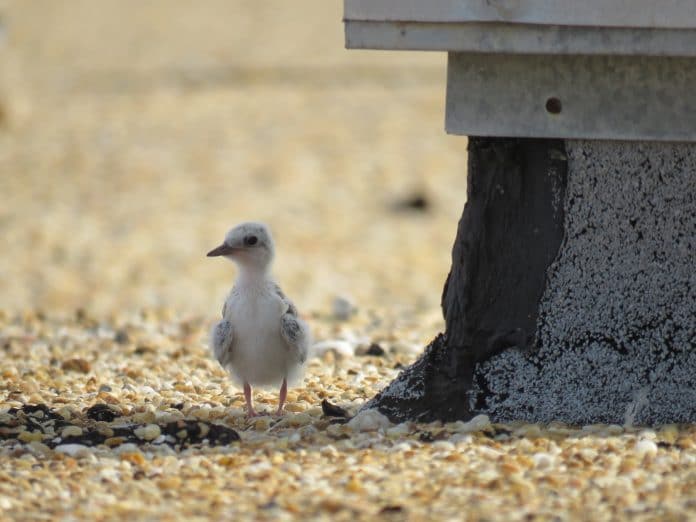TALLAHASSEE, FL — Gravel rooftops take on an entirely new function during the spring and summer months: nesting habitat for sea and shorebirds.
Sea and shorebirds – including Black Skimmers, Least Terns, and American Oystercatchers – traditionally nest on sandy beaches and marshy islands, but those habitats are in high demand for coastal recreation. In addition to development that has reduced available habitat, birds nesting on beaches are at risk from human disturbance. Though Audubon monitors and protects many such colonies, some birds have taken to gravel rooftops that approximate a pebble-covered beach in order to raise their chicks.
“Rooftop colonies have been an important adaptation for sea and shorebirds having difficulty nesting in beach habitats,” says Marianne Korosy, Ph.D., Director of Bird Conservation for Audubon Florida. “Audubon has spent many years monitoring these colonies and protecting the birds from the unique challenges of these high-rise nesting grounds.”
Though birds on rooftops contend with fewer ground predators and relatively less human disturbance, they still face aerial predators (like hawks or gulls), negative impacts from people doing building maintenance, and chicks falling off the roof. As a result, Audubon has developed a robust roof-monitoring program that mirrors the staff and volunteers (during non-covid-19 years) working the beaches.
“Rooftop monitors put up fencing around the edges of buildings, educate building-owners on how to keep the birds safe, and return fallen chicks to their parents,” Korosy continues. “Over our many years of rooftop monitoring, we have discovered valuable information about how rooftop and beach populations exchange birds.”
Critical bird banding information from rooftop Least Terns has taught researchers that these colonies not only produce fledglings for future roof nesting, but they also join colonies up and down the Florida coastline. Put simply, protecting the roofs protects an important breeding pool that can pump up beach-nesting colonies as well.
Unfortunately, gravel rooftops are falling out of favor with the roofing industry, and older gravel roofs are often replaced by other rooftop surfaces, reducing the availability of these unique nesting areas.
If you think a building near you harbors a rooftop colony, contact Audubon Florida at [email protected].

